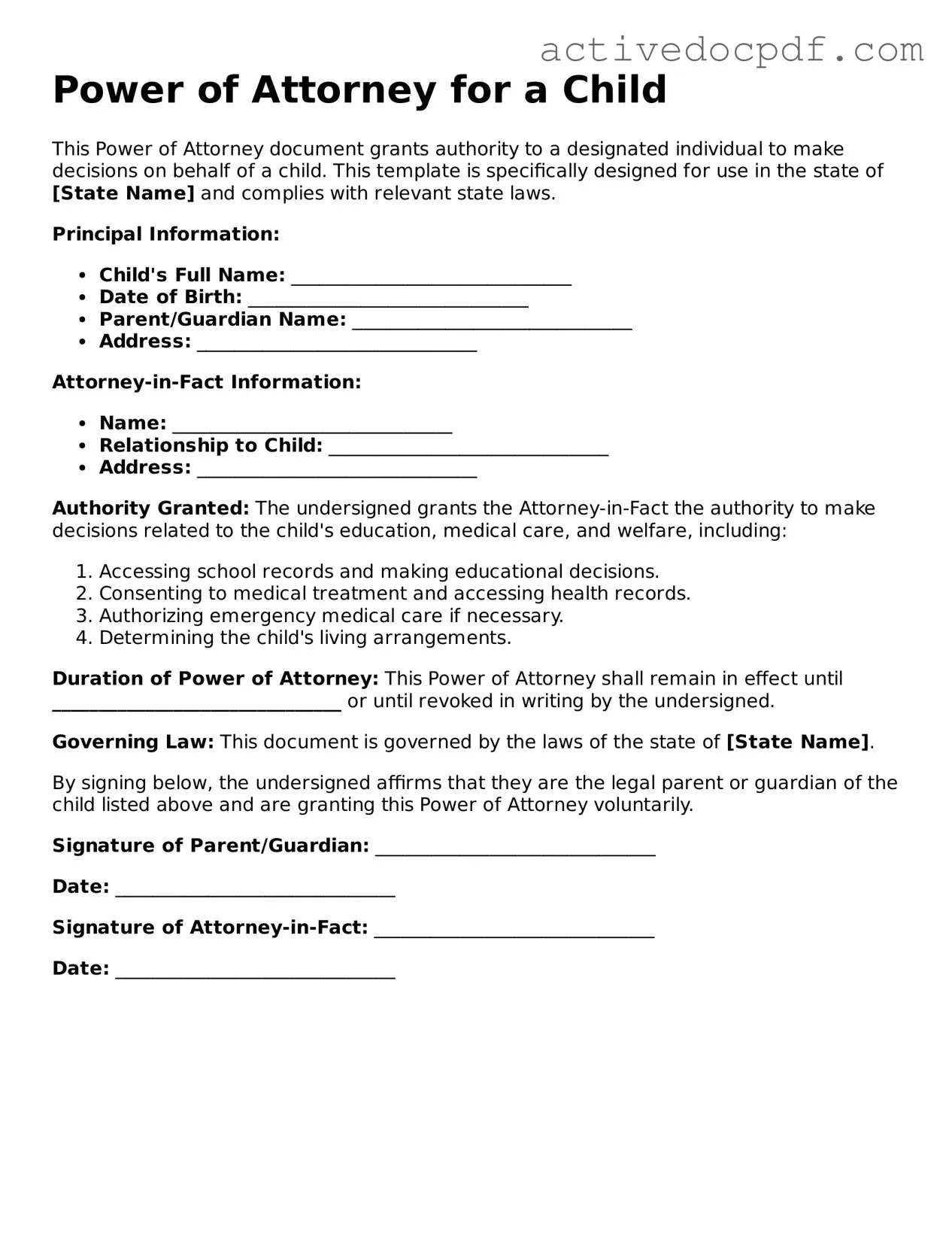Legal Power of Attorney for a Child Template
The Power of Attorney for a Child form is a legal document that allows a parent or guardian to grant another individual the authority to make decisions on behalf of their child. This arrangement can be crucial in situations where the parent is unable to care for the child temporarily, such as during travel or medical emergencies. Understanding this form's importance can help ensure that a child's needs are met even when parents are not present.
Edit Form Online
